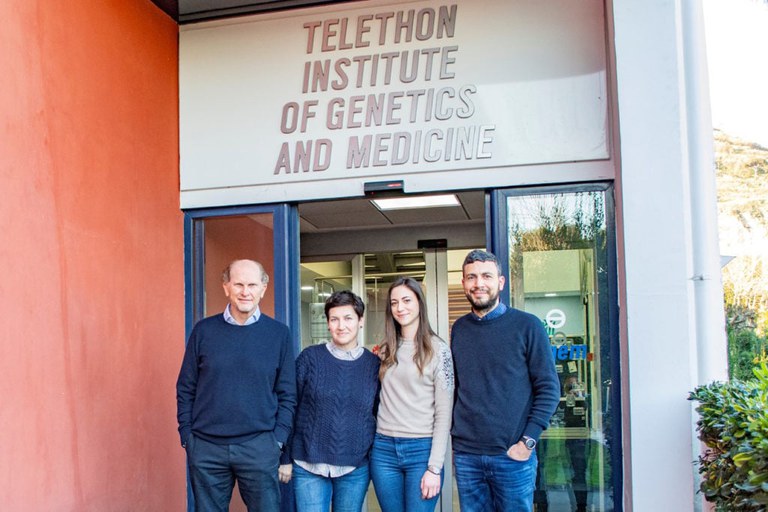Cellular metabolism: towards drugs against pathologies that favor the onset of tumours

"Structure of the lysosomal mTORC1–TFEB–Rag–Ragulator megacomplex"
The Tigem researchers describe a protein complex with a key role in cellular metabolism. From here, therapies aimed at restoring the compromised metabolic balance will be studied. The application of these results could also have repercussions on more common pathologies.
Abundance or lean times? This is the question that our cells constantly ask themselves, to evaluate whether they have enough nutrients available or whether they should instead draw on their internal energy reserves. A delicate and finely regulated balance, which can sometimes fail and thus favor the development of tumors, neurodegenerative and metabolic diseases. But researchers from the Telethon Institute of Genetics and Medicine (Tigem) in Pozzuoli led by Andrea Ballabio have found a possible strategy to reverse this course and guide the search for targeted therapies.The key to the process lies in two main factors: mTORC1, a protein complex known for more than twenty years as a real "thermometer" of the environmental conditions important for the cell, and TFEB, described for the first time in 2009 by the director of the Tigem as responsible for the disposal and recycling of excess substances. When nutrients are in sufficient quantities, mTORC1 shuts down TFEB and promotes the production (anabolism) of all the "building blocks" necessary for various cellular activities. If instead the "food" is scarce mTORC1 turns on TFEB, which thus sets in motion the degradation (catabolism) of the accumulated reserve substances, making them available for cellular metabolism. Under normal conditions, the two proteins are never simultaneously active. But if the balance is broken and both remain "on" the cell can begin to grow wildly and independently of the presence of nutrients: just what happens in tumours, in which there is uncontrolled proliferation. In an article published in "Nature", Ballabio and his collaborators - Gennaro Napolitano, Alessandra Esposito and Jlenia Monfregola - described, for the first time in very high resolution, how the regulation of TFEB by mTORC1 takes place, within a large protein complex involving as many as 36 proteins. The study, the result of an important international collaboration with the groups of James Hurley of the University of California and Lukas Huber of the University of Innsbruck, marks a fundamental step towards the identification of drugs capable of acting on this important metabolic pathway ."Thanks to a sophisticated microscopy technique made available by our American colleagues, called cryoelectronics, we were able to describe the interaction between these proteins in very fine detail - explains Gennaro Napolitano - We have known for some time that the inhibition of TFEB by of mTORC1 occurs through the addition of phosphate groups, but this time we have identified both the way this occurs and the arrangement of the proteins that participate in the process. This photograph allows us to visualize all the possible pharmacological targets at our disposal and to study which one is the most suitable to obtain the desired effect, for example a shutdown of TFEB to prevent it from working too much when it shouldn't».And it is precisely from here that the Tigem researchers will start again to look for targeted therapies such as to restore the metabolic balance compromised in some pathological conditions. Their focus will be on two genetic diseases characterized by a high risk of developing tumors, precisely due to excessive activation of TFEB: tuberous sclerosis and Birt-Hogg-Dubé syndrome (BHD). Although due to mutations in different genes, both are due to an incorrect assembly of the protein complex just described in the article published in "Nature".As Ballabio explains, «we have already demonstrated in animal models of these diseases that by inhibiting TFEB it is possible to stop tumor proliferation. We therefore believe that this is the way to go and the study just published provides us with a detailed map for identifying molecules, already available or to be designed ad hoc, capable of binding in the right place and producing the effect we want and, hopefully, not other. It is precisely because of the too many effects that so far all attempts to act pharmacologically on mTORC1 have failed: a fairly inevitable phenomenon considering how many functions this protein performs. This is why acting further "downstream" could allow us to take more targeted action. If this approach proves to be successful, it could also be applied in other hereditary diseases associated with cancer, or in non-hereditary tumors but already known to be associated with a dysregulation of this protein complex, such as melanoma or triple-negative breast cancer".
text edited from (italian version):
https://www.telethon.it/storie-e-news/news/dalla-ricerca/metabolismo-cellulare-verso-farmaci-contro-patologie-che-favoriscono-linsorgenza-di-tumori/
Suggested reading (Italian)
https://www.ilmattino.it/primopiano/sanita/tumori_scoperta_tigem_pozzuoli_napoli_ultime_notizie_oggi-7191252.html?refresh_ce
